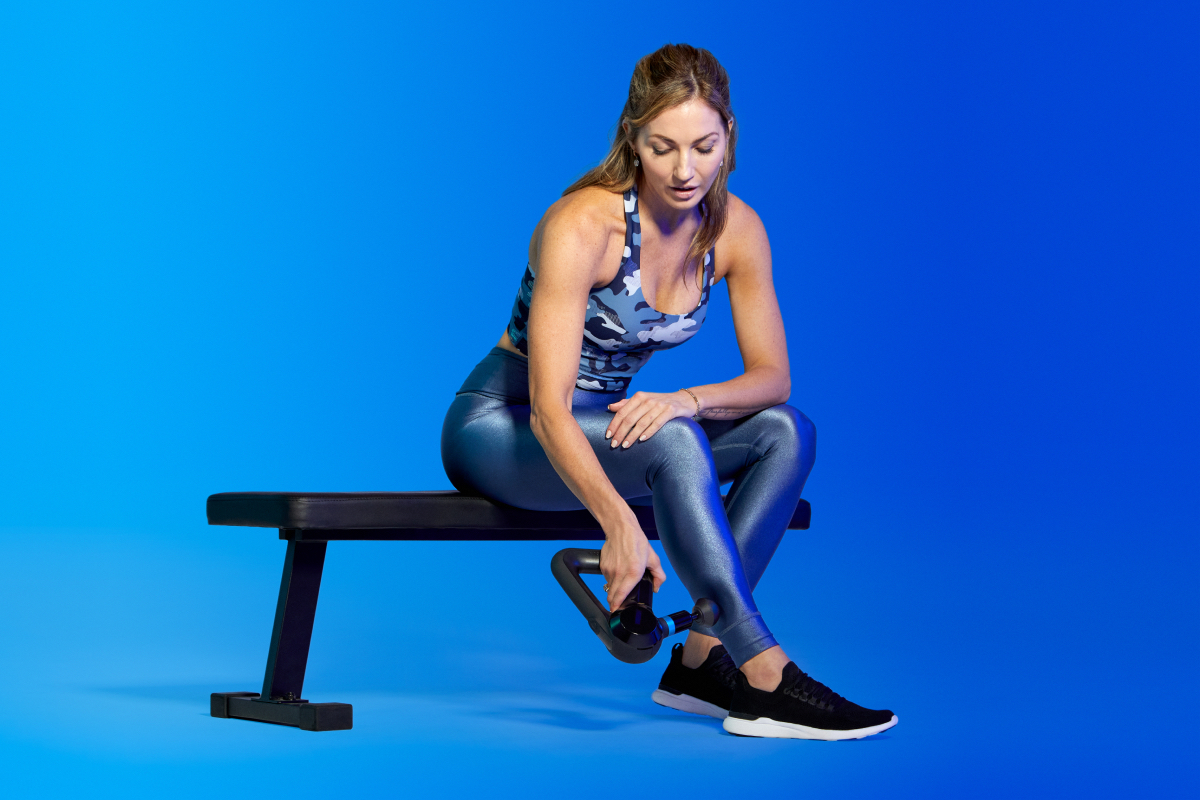Running 26.2 does a number on your body, but giving yourself a little post-race TLC ensures you won’t be sidelined for long.

Whether you make it through a marathon in record time or hit the wall hard at mile 20, no one’s immune to the day-after effects of running 26.2 miles. If you know, you know. But if you don’t, you’ll soon become well-acquainted with the awkward side shuffle up and down the stairs, or the fact that you need to hold on to the wall and the sink to sit down on the toilet. A marathon is tough on your body, but recovering the right way can make it feel so much more manageable. Here’s how.
Immediately after: Walk it out.
As tempting as it is to crash onto your couch ASAP after a marathon, adding a few more (very easy!) miles to your legs will actually help you recover faster. It’s called active recovery: “Active recovery is really important because it increases circulation and improves blood flow, which gets everything flowing through your body, prevents swelling, and circulates new nutrients to the muscles to help you recover faster,” explains Daniel Giordano, D.P.T., C.S.C.S., chief medical officer at Bespoke Treatments Physical Therapy in New York City. “After a marathon, just walk—you don’t want your body to stiffen up.”
A few hours later: Get a massage.
If you spot a recovery booth offering massage post-race, sign yourself up. A 20- to 30-minute massage performed immediately following or up to two hours after exercise was shown to effectively reduce delayed onset muscle soreness (DOMS) for up to 96 hours after exercise, a 2018 systematic review published in Frontiers in Physiology found. Visiting a masseuse or using a percussive therapy device the day of or the day after can also help, as long as you aim for “easy, gentle, light massage,” says Giordano. “That’s what helps increase circulation and blood flow. Don’t suffer through a soft tissue massage, because it’s almost bruising your system further.” If you do prefer that deeper type of massage, wait until at least 48 to 72 hours after the race, he adds.
When you get home: Take a cold bath.
It’s about as comfortable as mile 21 of a marathon, but immersing yourself in cold water can also reduce DOMS after exercise—especially running—compared with passive interventions involving rest or no intervention, a 2012 review published in the Cochrane Database of Systematic Reviews found. It also reduces subject fatigue more than passive recovery, according to a 2018 study published in PLoS One. The cold water basically constricts your blood vessels, then allows them to immediately dilate when you get out of the water, which may improve how quickly sore muscles get the oxygen they need post-run, the authors of a 2016 study published in Medicine wrote.
That night: Foam roll.
The benefits of foam rolling post-race are two-fold: For starters, rolling after intense workouts (and what else is a marathon if not intense?) can relieve soreness over the next two days, according to a 2014 study in Medicine & Science in Sports & Exercise. But it’s also about relaxing your system. “When you use a foam roller, it downregulates your nervous system and shifts your body into a recovery state,” explains Giordano. “That recovery state is where your body actually starts to repair tissue.” You can roll right after the marathon, but Giordano also recommends rolling right before bed to aid your sleep—because sleep is the most important aspect of recovery. You should spend about two minutes rolling each muscle group, he says, and make sure to go easy on yourself; you don’t want to further bruise the tissue.
The next day: Slip on compression socks or boots.
Whether you’re flying home from your race or just shuffling around your own house, throw on a pair of compression socks—wearing them for 48 hours after a marathon was shown to improve recovery in a 2015 study published in the Journal of Strength and Conditioning Research. “The key with all these things is circulation and blood flow—in this case, you get a pump effect from the compression that circulations red blood cells and oxygen back to the tissue for repairs,” says Giordano. If you have access to them, compression boots can have an even greater effect, he adds, because “they’ve been shown to increase insulin-like growth factor-1 (IGF-1), a hormone that helps repair your tissue.”
The first week: Take a break from running.
Some people finish a marathon and can’t even think about running another step for a month, while others are immediately itching to get back out there. “I always tell everyone to wait at least five days to a week before running again,” says Giordano. “You want your body to fully repair itself, so you should focus on these recovery phases, nutrition, and sleep in that first week.” When you do hit the ground running again, make it light and easy: Don’t push the pace, don’t go too far (think: 4 to 6 miles max), he says.
After a week: Ease back into strength training.
That first week off is all about recovery, so don’t add any resistance to your training. Instead, stick to low-impact cross-training workouts like swimming or cycling, says Giordano. Wait at least 24 hours post-race to start stretching—so you’re not training your muscles further—and, during that recovery week, prioritize mobility work. “There’s so much acute muscle damage that occurs during a marathon, that it takes some time to work out your tissues,” he explains. After a week, once you’ve really flushed out your system and let your body repair itself, you’ll be able to take on resistance and start making gains again.